Repairs Handbook
Our repairs handbook can be viewed below or can be downloaded as a pdf document: Repairs Handbook [pdf] 429KB
If you would like an accessible version of the handbook please contact accessibility@ashford.gov.uk.
We can also provide handbooks in other languages, and physical copies in standard or larger print to be sent out to tenants. Please get in touch with our tenant engagement team to request on 01233 330573 or email tenant.contact@ashford.gov.uk
+ Introduction
This repair guide for tenants has been produced to provide general advice to tenants on dealing with repairs. If advice from your landlord differs from anything found in this guide, you should assume that what they have told you applies.
Contact us on 01233 330366 or go to visit our housing webpages for guidance if in any doubt.
+ Emergencies
Fire
- Dial 999. If living in a block of flats, follow the fire action plan. If living in other property types, get everyone out if it safe to do so and do not go back for any reason
- Close all doors and windows
If you smell gas
- Open the doors and windows to allow gas to escape
- Check to see if the gas has been left on unlit, or a pilot light has gone out. If so, turn the appliance off, and do not try to relight it until all smell of gas has been cleared
- If the leak cannot be stopped by turning off an appliance, or you are uncertain whether it has been stopped, turn the main gas supply off at the meter and phone the gas emergency service immediately on 0800 111 999
- Do not turn any electrical switches on or off
- Do not use the door bell
- Do not smoke
- Do not use matches, lighters or naked flames
Burst or leaking pipes
- Turn the water off at the mains
- If electrics are affected, turn off the electricity at the consumer unit
- Call our repairs service on 01233 330366
Loss of electricity
- If neighbours are also affected, contact your electricity company
- If it is just your home affected check there is enough credit on the meter and the bills are paid
- Check your consumer unit or fuse box - it will either have fuses or trip switches
- If a switch has tripped to the OFF position put them back to the ON position
- If the switch trips again, you need to identify which appliance on that circuit is causing a problem - do this by unplugging all appliances in the circuit area that is tripping and plug them back in one by one until it trips again. If the appliance is ours, report the repair
- If the problem persists call our repairs service on 01233 330366
+ How to report a repair
Online – Use our webpage to report non-urgent repairs. There is a step-by-step picture guide to assist. Photographs of your issue can be uploaded.
www.ashford.gov.uk/report-a-repair
Telephone – Our customer service team are available to call between 8.30am-4pm on 01233 330366 We also provide an out of hours service on the same telephone number.
For heating and hot water – For heating and hot water repairs, please contact our contractor, Swale Heating on 0800 206 1371 Or, via their website www.swaleheating.com
Email – General non-emergency repairs: housing.repairs@ashford.gov.uk
For heating and hot water repairs: enquiries@swaleheating.com
Tenants Portal – Register as a user to our Tenants Portal and report your repair directly through the app. www.ashford.gov.uk/tenants-portal
My Ashford app - Register as a user to the My Ashford app and report your repair using this portal to all council services. www.ashford.gov.uk/myashford
+ The repairs process
Before contacting us
- Check to see whose responsibility the repair belongs to
- Note down any information you will need to give us
Reporting
- Provide as much detail of the repair as possible
- Your contact details
- Times/days you are available for a repair appointment
Job logged
- The repair is recorded on our systems and is allocated to our repairs team or appropriate contractor
Appointment made
- Appointment confirmed between you and the repairs team
- More complex repairs may require a housing or technical officer to assess the works
Work carried out
- Repairs team to attend repair
Work complete
- Work completed and job closed
- Satisfaction survey and feedback about the service
+ Repairs timescales
How repairs are prioritised
Some repairs can be more important than others. When a problem threatens health and safety, your wellbeing, or the property itself, it will be deemed to be an emergency.
Non-emergency repairs are categorised as routine. If the problem is severely inconvenient, it will be prioritised, such as repairs set out by the Right to Repair (see below). Less-urgent repairs will have longer timescales.
Where maintenance can be planned in advance, you will be contacted to make arrangements for works to be carried out.
Work undertaken for emergency call outs may be limited to making safe, with further works arranged by appointment.
The following shows the expected repair response times we aim for based on category:
|
Repair Type |
Expected response time |
|---|---|
|
Emergency |
2 – 24 hours |
|
Routine – Priority |
Within 7 days |
|
Routine – General |
Within 28 working days |
|
Routine – Planned |
Within 90 days |
|
Planned maintenance |
Agreed in advance |
Repair priorities
Below are examples of how certain repairs would be categorised and their expected response times:
|
Emergency
|
Routine Priority
|
Routine General
|
Routine Planned
|
Planned Maintenance
|
|---|---|---|---|---|
|
2-24 hours |
Within 7 days |
Within 28 working days |
Within 90 days |
Agreed in advance |
|
Severe roof leaks |
Partial loss of electrical power/light |
Minor problems with toilets, baths, sinks |
Clearing gutters |
External painting |
|
Burst pipes |
Unsafe power, sockets or electrical fittings |
Doors or windows sticking |
Window/door seal replacement |
Boiler replacements |
|
Blocked drains |
Partial loss of water or gas supply |
Plaster repairs |
|
Replacing windows and doors |
|
Blockage of only toilet |
Taps which cannot be turned |
Brickwork |
|
Bathroom/kitchen upgrades |
|
Loss of electrical power/light |
Leaking roofs |
Non-urgent internal/external repairs |
|
Annual servicing of gas appliances and central heating |
|
Loss of gas |
Insecure external windows |
|
|
Inspection and testing of appliances |
|
Loss of heating in cold weather when other heating unavailable |
|
|
|
|
Right to repair
We have a legal obligation to complete some types of repair works within a certain timescale. These works are called ‘qualifying repairs’. When you report a qualifying repair, we will tell you who will do the repair and when it should be completed by. If these repairs are not completed after two requests, and you have provided full access, you may be entitled to compensation.
|
Right to Repair |
Response Time (working days) |
|---|---|
|
Total loss of electric power |
1 |
|
Partial loss of electric power |
3 |
|
Unsafe power or lighting socket or electrical fitting |
1 |
|
Total loss of water supply |
1 |
|
Partial loss of water supply |
3 |
|
Total or partial loss of gas supply |
1 |
|
Blocked flue to open fire or boiler |
1 |
|
Heating or hot water not working between 31 October and 1 May |
1 |
|
Heating or hot water not working between 1 May and 31 October |
3 |
|
Blocked/leaking foul drain, soil stack or toilet |
1 |
|
Toilet not flushing (if there is only one toilet in the property) |
1 |
|
Blocked sink, bath or basin |
3 |
|
Tap cannot be turned |
3 |
|
Leak from a water pipe, tank or cistern |
1 |
|
Leaking roof |
7 |
|
Insecure external window, door or lock |
1 |
|
Loose or detached banister or hand rail |
3 |
|
Rotten timber flooring or stair tread |
3 |
|
Door entry phone not working |
7 |
|
Mechanical extractor fan in internal kitchen or bathroom |
7 |
+ Repair Obligations
Our responsibilities and obligations
As your landlord, we have a legal duty to carry out certain repairs when these are needed. As legislation changes, the responsibility for specific repairs may also change. This means that we may have carried out certain repairs in the past, but because of changes in the law, this may change whose responsibility it is.
We are obliged to keep the structure and exterior of your home and the building in which it is situated in good repair. We also undertake to keep in good repair and proper working order installations for water, gas and electricity supply, for sanitation and for room and water heating. This includes annual gas safety and regular electrical safety inspections.
In the case of flats and maisonettes, we will take reasonable care to keep common entrances, halls, stairways, lifts, passageways, rubbish chutes and any other common parts in reasonable repair.
Your responsibilities
You are responsible for keeping your home in a reasonable condition and for attempting to solve minor problems. You are also responsible for insuring your personal belongings.
You are expected to take reasonable precautions to prevent damage to the property by fire, frost, bursting of water pipes or the blocking of drains and sinks.
You must provide access each year for the registered gas inspector’s safety check visit.
We rely on you to report any faults promptly and as fully and accurately as possible. Be sure to provide access to our team or contractors at the appointed time to ensure that a repair can be undertaken.
Check the contractor’s ID and confirm with them the work that needs to be done. Keep the area clear of furniture, pets or children where necessary.
Please make sure that the property is clean, tidy, reasonably decorated and that all of your unwanted belongings are cleared if you decide to move home.
+ Repair responsibilities
Our repair responsibilities
Below is a list of some of the most common repairs the council is responsible for:
- Aids and adaptations
- Blockages not caused by residents
- Central heating
- Communal repairs
- External decoration
- External doors
- Electrical wiring
- Extractor fans
- Fences (bordering public highways/footpaths)
- Fire doors
- Floors (not floor coverings)
- Boilers
- Glazing (not broken by accident/misuse)
- Guttering
- Hot water
- Insulation
- Light switches
- Plaster finishing
- Radiators
- Roofs
- Seals/tiling around bath, basin, worktops
- Stairs
- Stopcocks
- Taps (internal)
- Toilet pan and cisterns
- Vermin, rats, birds, squirrels
- Windows (frames, sills, vents)
Your repair responsibilities
Below is a list of the main repairs that are not provided by the council:
- Blockages of internal wastes and drains
- Cookers, including installation or disconnection
- Curtain poles, rails
- Electricity and gas meters
- Fences (between properties)
- Floor coverings e.g. carpet, laminate
- Forced entry damage
- Garden maintenance
- Insects, ants, wasps, fleas, bed bugs
- Internal decoration
- Internal doors
- Items installed by/gifted to tenants
- Key replacements
- Locks
- Light bulbs, plugs, fuses
- Limescale removal
- Plug chains to baths, sinks and basins
- Smoke alarm battery replacement
- Taps (external)
- Toilet seats
- TV and telecoms equipment
+ Complaints and issues
If things go wrong
We aim to deliver an excellent service and home, however sometimes things can go wrong. In the first instance, please get in touch with our repairs team to discuss the issue. We will always try to put something right where we can.
However, if you are unhappy with our response or actions taken to put something right, a complaint can be raised.
The Housing Ombudsman provides useful advice on complaints and housing matters. More details can be found on their website www.housing-ombudsman.org.uk or by calling 0300 111 3000.
Raising a complaint
Online – www.ashford.gov.uk/complaints
Telephone – 01233 331111
Post – Complaints, Ashford Borough Council, Tannery Lane, Ashford, Kent TN23 1PL
Email – complaints@ashford.gov.uk
Mediation
Unfortunately, sometimes landlords and tenants have disagreements. Mediation can be the quickest way to reach a resolution that works for both parties and it may be offered if you are unhappy with our service.
In certain circumstances, if we fail to meet satisfactory standards resulting in material loss or serious inconvenience, you can apply for compensation. More information regarding our complaints procedure and policy can be found online at www.ashford.gov.uk/housing-complaints-procedure.
+ Improvements, alterations and adaptations
Improvements and alterations
Before you make any improvements or alterations to your home, you must contact us to obtain permission. You may also require planning permission or building control approval too.. You must also inform us if you have carried out previous home alterations without permission. An inspection may be required to decide whether there has been any damage to the property and if it still meets building standards. We have the right to charge you for any damage to the property and for the full cost of returning the property to its original standards if we decide this is appropriate.
Examples of the most common alterations are:
- Moving/removing fitted units or doors
- Modifications to central heating
- Plumbing in washing machines or other appliances
- Building patios
- Knocking down walls
- Double glazing
- Enclosing porches
- Extensions
- Installing a conservatory
- Fitting a gas fire
- Fitting different light switches
You do not need to get written consent for ‘small jobs’ or jobs which do not affect the landlords fixtures and fittings. If you would like any information about alterations or are unsure if you need permission for the work you are planning please contact planned.maintenance@ashford.gov.uk or call 01233 330688.
To apply for consent and for more information please visit www.ashford.gov.uk/tenant-alterations.
Adaptations for those living with disabilities
f you are registered disabled, or could be, and would like to apply for adaptations to be made to your home, you will need to contact an occupational therapist who will need to support your request to ensure that any major adaptations fully meet your needs. You can contact an occupational therapist via the Kent Assessment and Enabling team on 03000 416161.
We will consider all requests for adaptations that we receive from your occupational therapist. If you have any queries relating to adaptation work please contact us at disabled.adaptations@ashford.gov.uk
+ Rechargeable works
We expect that, as time passes, normal wear and tear will occur to your home. However we will charge for costs (a recharge) for repairs and maintenance if they are required because of misuse, neglect or damage, or where we undertake repairs that are not our responsibility.
If you wish to arrange for your own repair or alteration you will need our written approval before doing so. All recharge costs incur an additional 12.5% administration fee to the net cost of the repair.
Examples of recharges include:
- Clearing blocked toilets
- Changing locks due to lost keys
- Correcting any substandard or unauthorised works not carried out by us
- Cost of removal and/disposal of any possessions or rubbish left in properties when vacated after termination of the tenancy
Supporting vulnerable tenants
If you are elderly, vulnerable or have a disability and there is no other member of your household or family who can help, we may be able to assist with decorating certain rooms or maintaining your garden.
Please get in touch with your Neighbourhood Housing Officer to discuss.
Asbestos
Asbestos can sometimes be found in the exterior of buildings, interior workings of boilers/plumbing, or in other areas such as textured ceiling coatings used in the 1900s.
Where asbestos materials in a home are in good condition and unlikely to be disturbed, they do not present a risk. However, where materials are in poor condition or are disturbed or damaged, asbestos fibres can be released into the air, which, if breathed in, can cause serious lung diseases, including cancers.
If there is a concern of asbestos, the team will carry out an inspection prior to any repair works taking place.
+ Looking after your home
You are responsible for keeping the inside of your home in good condition. To help do this, it is best to carry out small tasks and checks to prevent future problems such as:
- Regularly wiping down windows affected by condensation. If any mould has formed clean off using a wash of diluted bleach or appropriate product
- Removing limescale from baths, sinks, shower heads and taps with descaler
- Preventing blockages in kitchen and bathroom sink waste pipes by flushing through with drain clearing products. Never pour cooking oil into sinks as it can clog pipes
- Preventing blockages in toilets by only flushing toilet paper
- Keeping outside gullies clear of leaves and other debris so that water drains away easily
- Ensuring you know where the main water stopcock is and how to turn off your electricity or gas supply in an emergency. Details are supplied at the front of this handbook, but please double-check with us if you are unsure
Winter checks
In Autumn, please check the following items and let us know if there are any problems ahead of the colder season.
- If you have an open fire has the chimney been swept? - this is normally the tenant’s responsibility
- Are all of your heating controls set and your boiler and hot water working correctly?
- Are there any tiles or slates missing/broken on your roof?
- Are there any blockages or leaks from gutters or downpipes?
Insurance
We recommend that you take out contents insurance for your belongings in your home as it can cost a lot of money and take time to replace items if they are damaged or stolen.
We have teamed up with Thistle Tenant Risks who can offer a contents policy specifically for tenants. Please see our home contents insurance web page for further information or contact your Housing Officer. Other insurance companies are also available.
Damp and condensation
Condensation occurs when there is an excessive build up of moisture in the air. Warm moist air condenses and forms water when it touches a cool surface like an external wall, window or even clothes.
If this condensation cannot dry out it could cause mould to form on walls, in cupboards and on window sills. It could also lead to mildew forming on clothes.
There are some things that help stop condensation forming:
- Produce less moisture by covering pans when cooking, dry clothes outside where possible or in a well ventilated room
- Ventilate to let the moisture out, by opening bathroom/kitchen windows for a while, or using an extractor fan
- Keep your home warm by at least keeping a low background heat. This need not result in significantly increased heating costs
- Wipe down where moisture settles
Any damp or mould concerns can be reported using any of the methods in the contact us part of this webpage or emailing damphelp@ashford.gov.uk.
Smoke detectors
Smoke detectors need to be cleaned and tested regularly to make sure they will operative effectively.
Most smoke detectors can be cleaned using a soft brush adaptor on the end of a vacuum cleaner. It is important that they should remain free from dust and grease. Care should be taken not to damage any of the internal parts. Never allow a smoke detector connected to mains electricity to get wet.
Fire safety in communal areas
Fire Safety Regulations state that items should not be kept in communal areas of flats. This is due to fire risk from items that could catch alight and fuel a fire, as well as potentially preventing residents from being able to safely evacuate the building.
All items that are deemed a risk will be removed from communal areas. Tenants will be given prior notice to remove items themselves.
It is particularly important that any lithium batteries from items such as electrical scooters, bikes or mobility vehicles are not charged in communal areas due to fire risk.
+ Dealing with blockages
Blockages are usually caused by objects such as nappies, toys, sanitary towels or wipes. If a blockage happens as a result of these objects getting stuck, we may charge you for clearing it. You should try to unblock this yourself to avoid being recharged.
To unblock a toilet do the following:
- If the pan is already full, remove some of the water into a bucket using a scoop, for example a jug or a bowl
- Push a plunger to the bottom of the pan. Pump it up and down vigorously about 10 times. This creates a pressure vacuum, which may shift the blockage
- When the blockage has disappeared, pour water from a bucket into the pan and see if it clears
- You may need to repeat this process several times before the toilet flushes normally
If there is no improvement after a couple of tries, you should contact us.
Thoroughly wash your hands and all equipment after you have finished.
Blockages to a kitchen sink, basin or bath waste pipes are usually caused by a build-up of fat, tea leaves, food debris or hair in the waste trap. The trap is the pipework directly under the bath, basin or sink. It always holds some water, which stops air and foul smells coming back up the pipe.
To unblock a sink/basin/bath
- Remove most of the water, so the sink is half full
- Wet a rag/some cloth and hold it tightly over the overflow opening
- Place a plunger over the plug hole and pump up and down rapidly
If the sink, basin or bath remains blocked after trying these methods the blockage may be in the soil stack or main drain. We will need to clear this so please contact us.
To stop an overflow on a toilet
If the toilet cistern is overflowing try lifting the float to close the ball valve. If this stops the overflow, try to tie it up to keep the valve closed.
+ Leaking, burst or frozen pipes
If electrics get wet
DO NOT TOUCH and turn off electricity at the meter.
When pipes leak
Place a dish/bowl underneath the leak. Pull back any carpets and lay down towels to absorb any water.
When pipes burst
Turn off water at the main stopcock and any gate valves from the water tank. Switch off any water heaters. Open all the taps to drain water from the system.
When ceilings bulge
To prevent the ceiling falling down, place a bucket under the bulge and pierce a small hole to let water through.
Prevent pipes freezing
If you are going away for a few days in winter, lower the setting on your central heating room thermostat but leave the heating on.
Bleeding radiators
If the top part of a radiator is cold while the bottom is warm, there is air trapped in the system. Bleeding the radiator releases this air. DO NOT bleed radiators if you have a combination boiler (one with a pressure gauge or low pressure light).
Turn off your heating system and wait for the radiator to cool down. Locate the bleed valve (small square nut) at the side, insert a radiator key and turn it slowly anticlockwise until you hear a hissing sound. When water starts to trickle out, re-tighten the bleed valve. Hold a small cup underneath the valve when doing this to catch any water. DO NOT unscrew the valve completely.
Gas and electricity safety
Never tamper with the electricity company’s fuse, meter or seals.
Ensure that you are familiar with the location of your gas mains and electrical trip switches and consumer units. Use the emergency contact details and guidance at the front and back of this handbook if an emergency occurs.
+ Our contractors
Most of our responsive repairs service is carried out by our in-house team, however we also use contractors to provide specialist services.
All contractors representing the council are there to provide the service as if we were carrying it out in-house. They must also show ID, be polite and courteous and do a good job.
If for any reason you are unhappy with their work, please contact the repairs team and let them know.
|
Repair type |
Contractor |
|---|---|
|
General repairs |
ABC Repairs |
|
Electrics |
ABC Electrical |
|
Heating and gas |
Swale Heating |
|
Cleaning of communal areas |
Calibre Cleaning |
|
Landscaping/grounds maintenance |
Aspire Landscape Management |
+ Handbook versions
We offer repairs handbooks in other formats such as in different languages or large print. Please get in touch with your Neighbourhood Housing Officer via email on housing@ashford.gov.uk or 01233 330688. Or, contact the Repairs team to request a copy.







